Custom alerts and data visualization let you quickly identify and prevent port connection issues.
Diagnose network issues by continuously tracking different ports in your network. Show port status on your network devices, such as switches and firewalls, response time, uptime, throughput, bandwidth usage, and other key metrics in real time. Visualize monitoring data in clear graphs and dashboards to identify problems more easily. Gain the overview you need to troubleshoot device outages, downtime, and all kinds of port connection issues.
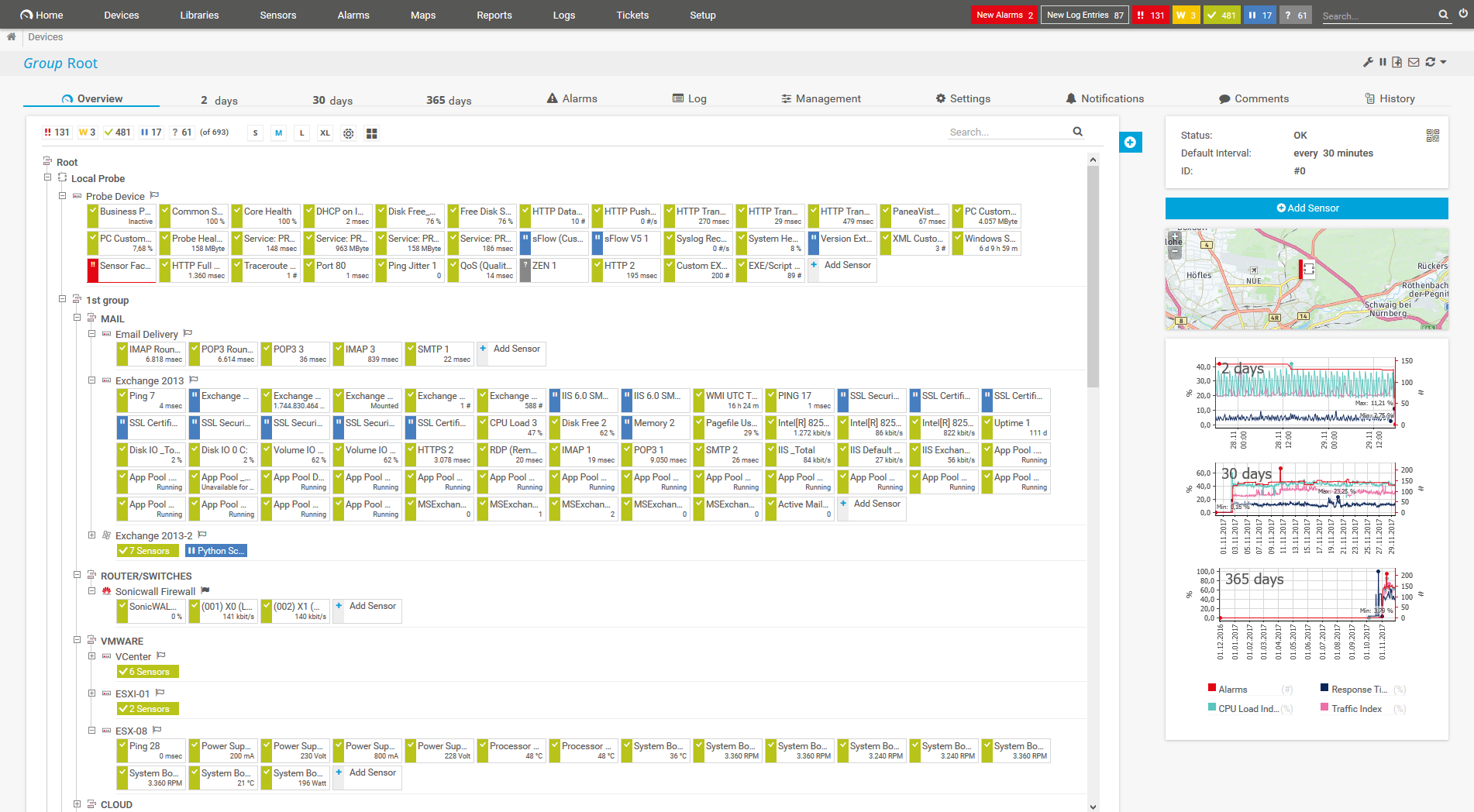
Device tree view of the complete monitoring setup
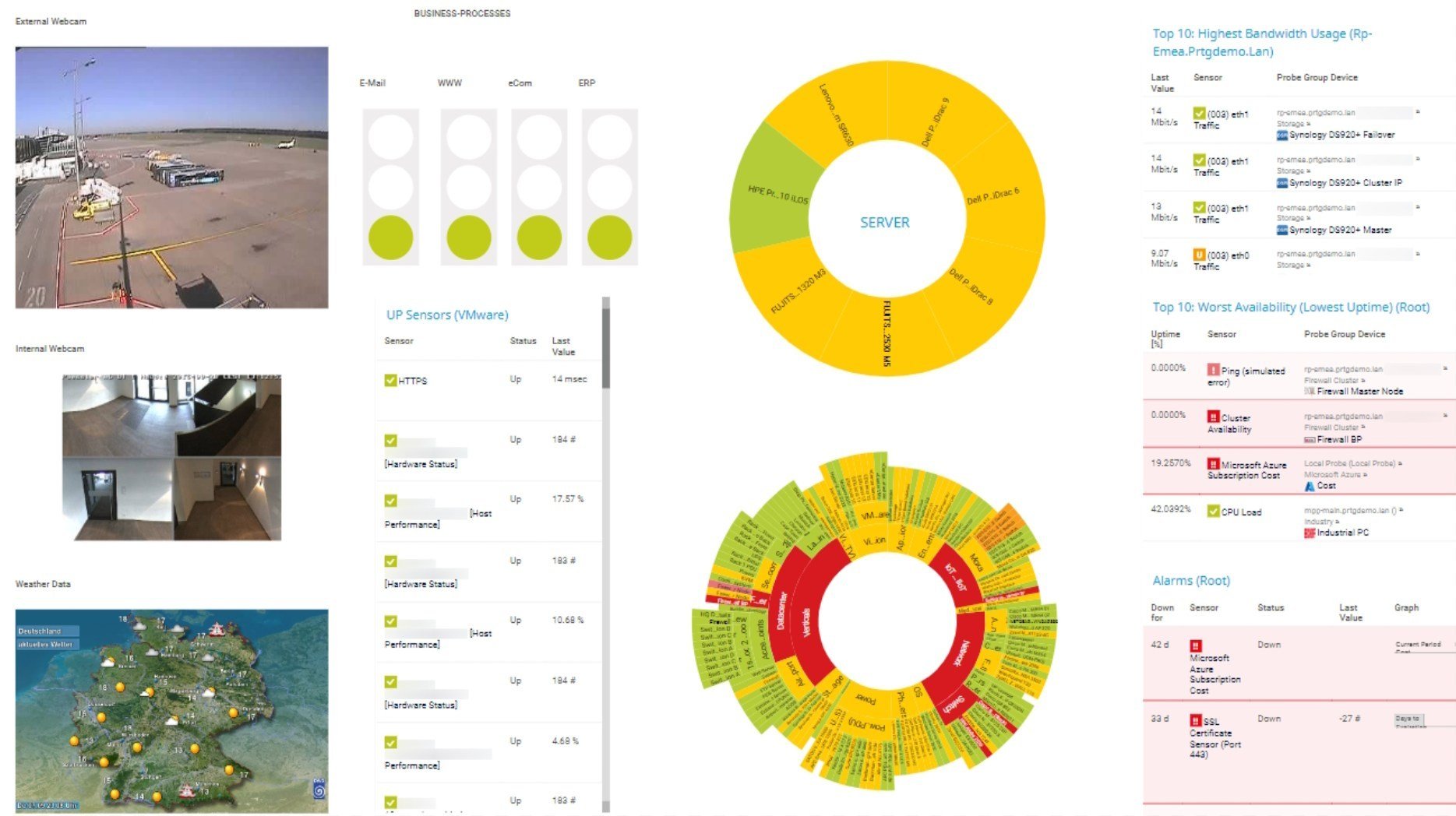
Custom PRTG dashboard for keeping an eye on the entire IT infrastructure
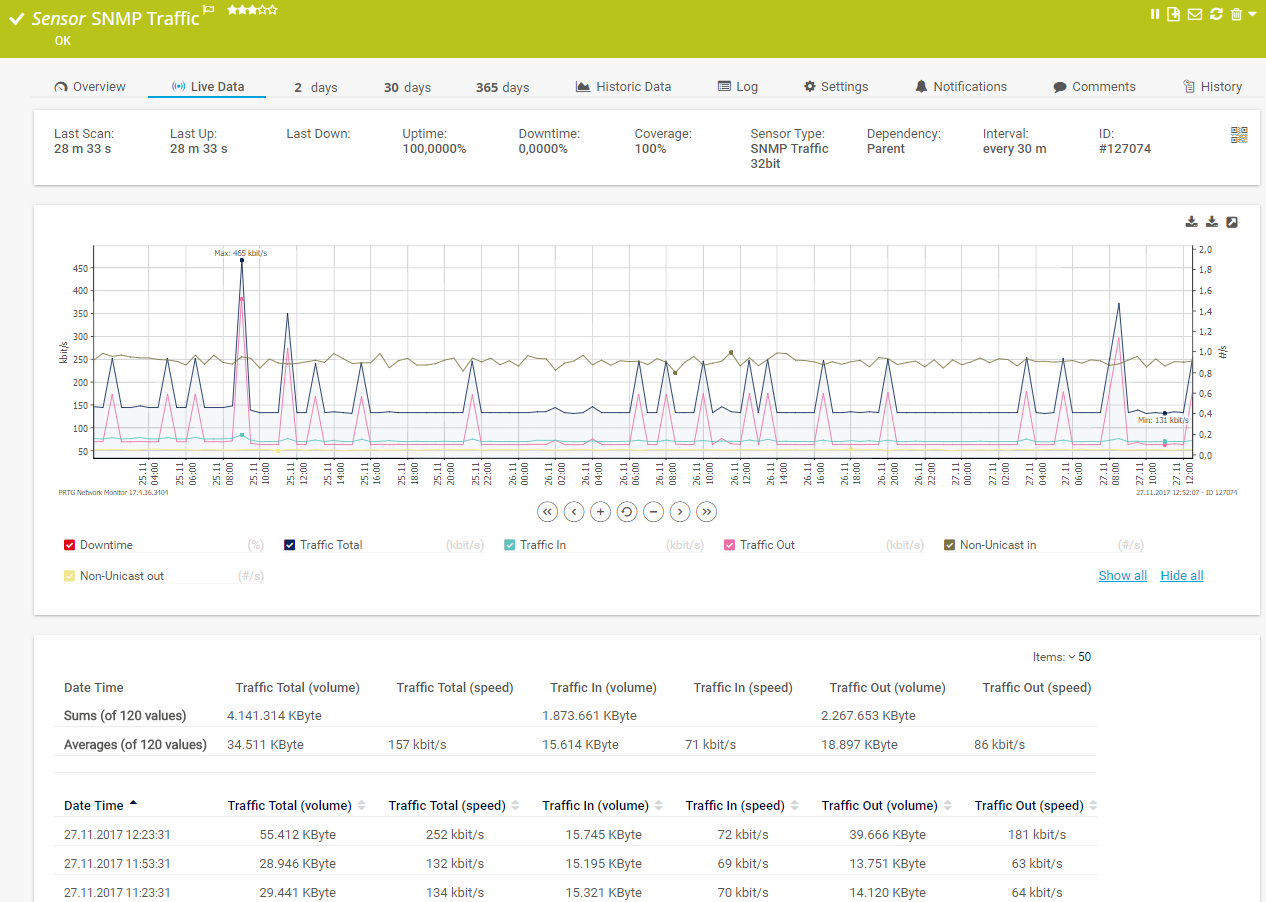
Live traffic data graph in PRTG
Switches are often bottlenecks and the failure of a single switch can impact an entire network. With switch port monitoring, you can see at a glance how much traffic runs through your switch.
How many router ports are currently in use and how many are still free? How high is the bandwidth load? With continuous router port scans, you can identify early on when ports reach their capacity.
Servers are at the heart of any IT infrastructure. If a server port fails, this can be felt in the whole network immediately. With PRTG, you can monitor your servers as well as your server ports.
PRTG comes with more than 250 native sensor types for monitoring your entire on-premises, cloud, and hybrid cloud environment out of the box. Check out some examples below!
See the PRTG Manual for a list of all available sensor types.
Custom alerts and data visualization let you quickly identify and prevent port connection issues.
PRTG is set up in a matter of minutes and can be used on a wide variety of mobile devices.
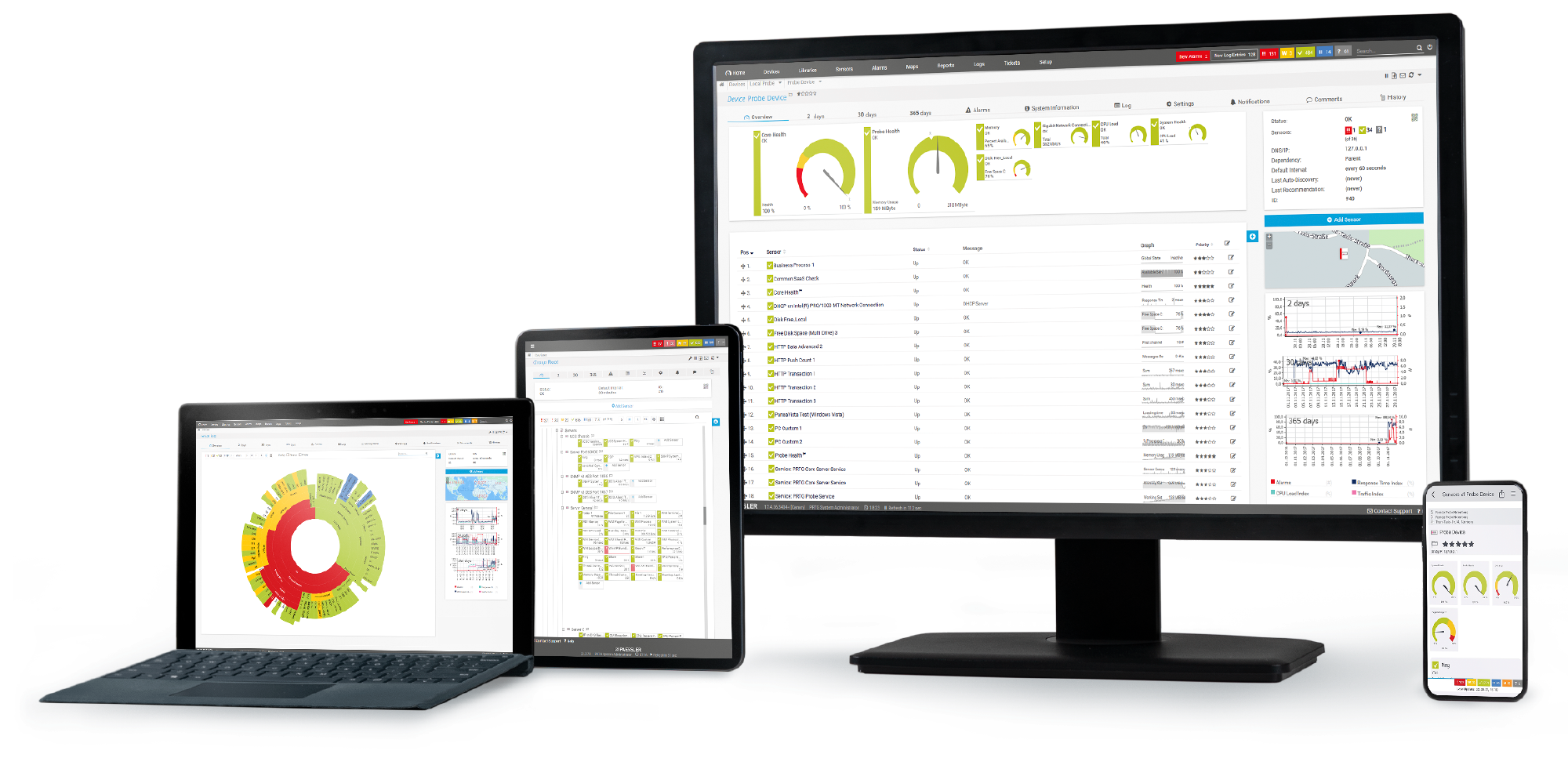
Partnering with innovative IT vendors, Paessler unleashes synergies to create
new and additional benefits for joined customers.
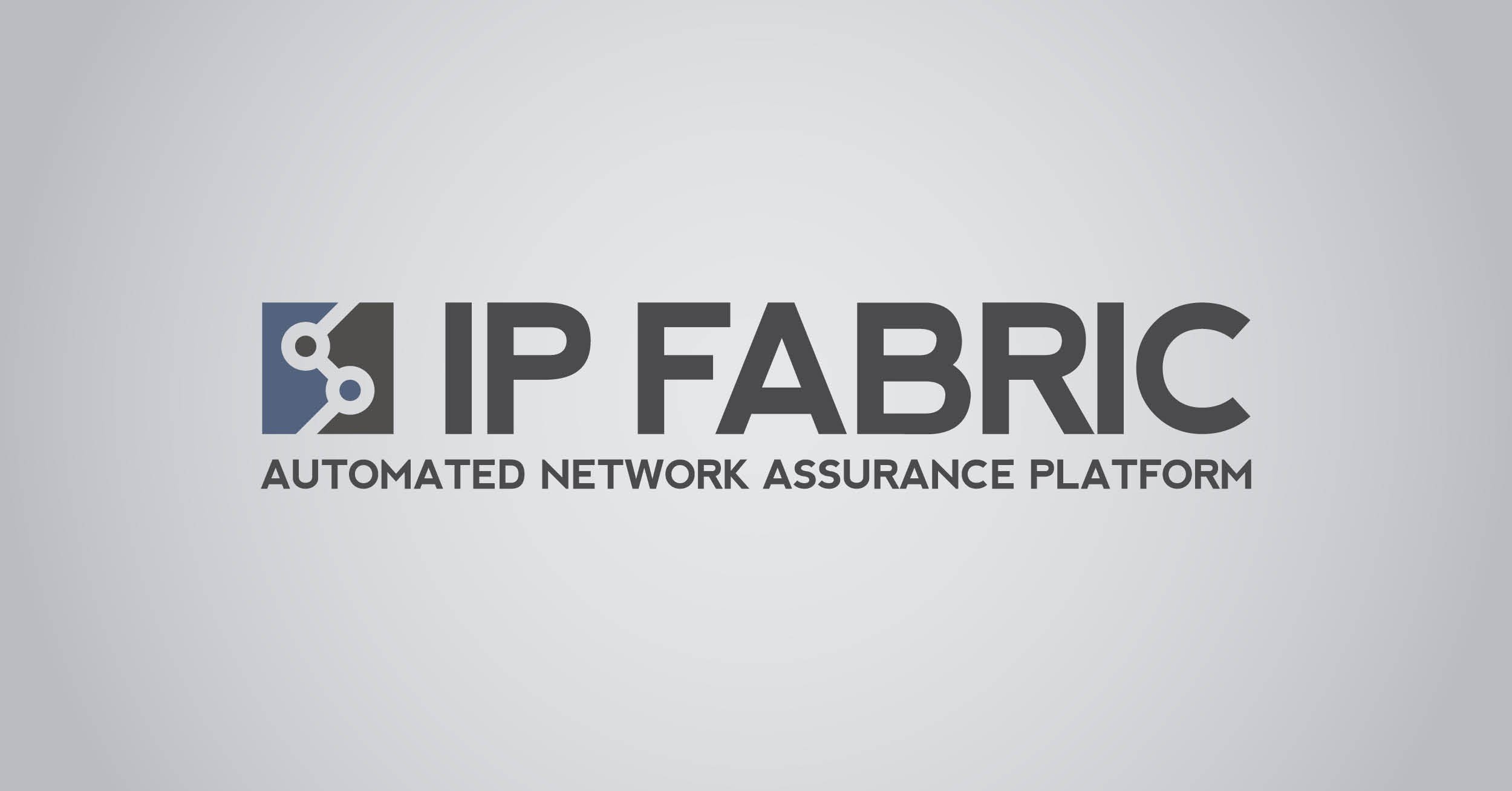
Combining PRTG’s broad monitoring feature set with IP Fabric’s automated network assurance creates a new level of network visibility and reliability.

Rhebo and PRTG offer a comprehensive monitoring solution for IT and OT environments: from condition monitoring through to anomaly and threat detection.
Real-time notifications mean faster troubleshooting so that you can act before more serious issues occur.
Network Monitoring Software – Version 24.4.102.1351 (November 12th, 2024)
Download for Windows and cloud-based version PRTG Hosted Monitor available
English, German, Spanish, French, Portuguese, Dutch, Russian, Japanese, and Simplified Chinese
Network devices, bandwidth, servers, applications, virtual environments, remote systems, IoT, and more
Choose the PRTG Network Monitor subscription that's best for you
A port is a part of the network address and ensures the proper distribution of connections and data packets. Valid port numbers range from 0 to 65535. Many applications use typical or standardized ports like FTP (port 20), SMTP (port 25), and SNMP (port 161). These ports are used primarily by protocols such as the Transmission Control Protocol (TCP) and User Datagram Protocol (UDP).
The Transmission Control Protocol (TCP) is the most commonly used protocol to send packets. It operates in a connection-oriented manner and requires the establishment of a connection between a client and server before any data can be sent. The server needs to be in a listening state (referred to as passive open) to accept connection requests from clients. the resulting load is higher than with UDP. There are standardized ports for TCP.
The User Datagram Protocol (UDP) is a connectionless protocol. There is no sequential numbering and it generates much less load. Therefore, UDP is more economical, but also more prone to errors. The UDP protocol is often used for applications where packet loss is not that important. There are also standardized ports for UDP.
Paessler PRTG is a comprehensive network and port monitoring tool that helps administrators keep an eye on the health and performance of their networks. In the context of port monitoring, PRTG can monitor the status and activity of network ports on various devices, helping to identify potential issues such as traffic bottlenecks, unauthorized access, or malfunctioning ports. It can monitor ports on switches, routers, and other network devices to ensure optimal network performance.
Port monitoring is a network management technique that is used to analyze traffic on specific ports and to determine whether ports are open or closed for maintaining network security and performance.
A port sniffer is a tool or software that captures and analyzes data on network ports. It is commonly used for network diagnostics and troubleshooting. While port monitoring offers a broader range of functionalities including security features, a port sniffer focuses more on detailed data packet analysis and can be used for specific investigations or audits.
Port mirroring is a network technique that allows you to copy or mirror the network traffic from one network port (or multiple ports) and send that copy to another port on the same network switch. In PRTG, port mirroring is used by the Packet Sniffer sensor to monitor header traffic.
PRTG requires several ports to be open and reachable on your system for full functionality. Here you can find a first overview:
In PRTG, “sensors” are the basic monitoring elements. One sensor usually monitors one measured value in your network, for example the traffic of a switch port, the CPU load of a server, or the free space on a disk drive. On average, you need about 5-10 sensors per device or one sensor per switch port.
Paessler conducted trials in over 600 IT departments worldwide to tune its network monitoring software closer to the needs of sysadmins. The result of the survey: over 95% of the participants would recommend PRTG – or already have.
Paessler PRTG is used by companies of all sizes. Sysadmins love PRTG because it makes their job a whole lot easier.
Bandwidth, servers, virtual environments, websites, VoIP services – PRTG keeps an eye on your entire network.
Everyone has different monitoring needs. That’s why we let you try PRTG for free.